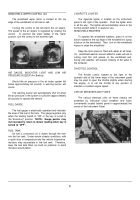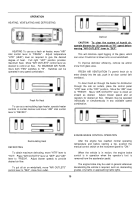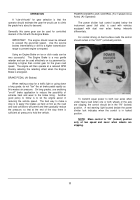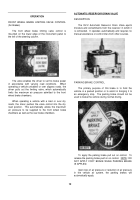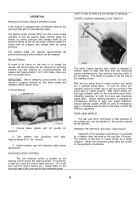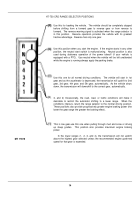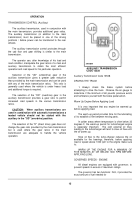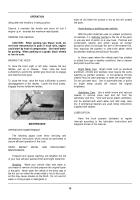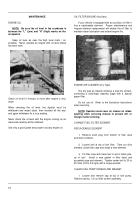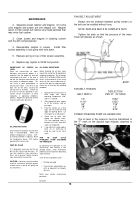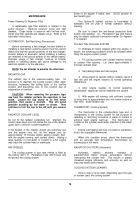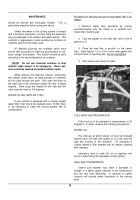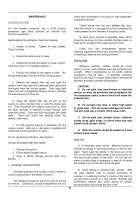TM-5-3805-254-14-P-1 - Page 25 of 590
MAINTENANCE
Power Steering Oil Reservoir Filter
A replaceable type filter element is located in the
pump reservoir.
Remove reservoir cover and filter
element.
Clean inside of reservoir with lint-free cloth.
Install new filter element and replace cover.
Refer to the
lubrication instructions.
ALTERNATOR - Self-Rectifying (Precautions)
Before connecting a fast charger, booster battery or
installing a new battery extreme caution must be used to
make sure that the ground polarities of the fast charger,
booster battery or alternator (when installing a battery)
are matched to the ground polarity of the vehicle battery.
Improper usage of fast charger, hook-up of booster
battery or installing battery can cause damage to the
electrical system or to the alternator.
NOTE: Do not attempt to polarize the alternator.
RADIATOR CAP
The radiator cap is the pressure-sealing type.
Its
purpose is to maintain the cooling system under slight
pressure, increasing the boiling point of the cooling
solution and preventing loss of the solution due to
evaporation or overflow.
CAUTION:
When removing the pressure type
cap from the radiator perform the operation in two
steps.
Loosen the cap slowly to its first notch
position, then pause a moment.
This will avoid
possible scalding by hot water or steam.
Then
continue to turn the cap to the left until you remove
it.
RADIATOR COOLANT LEVEL
Do not fill the radiator completely full.
Maintain the
coolant level about one inch below the top of the radiator
upper tank to allow for coolant expansion.
If the coolant in the radiator should get extremely low
and the engine very hot, let the engine cool for
approximately 15 minutes before adding coolant; then,
with the engine running, add coolant slowly.
Adding a
large quantity of cold water or coolant to a hot engine
may crack the cylinder head or crankcase.
ANTI-FREEZE
The cooling system of your new vehicle is filled at
the factory with I.H.
Permanent-Type Anti-Freeze and
will protect the cooling system
down to 34 degree F below zero.
(50-50 solution of
permanent type)
This factory-fill coolant solution is formulated to
withstand one full year of normal operation without
draining.
Be sure to check the anti-freeze protection level
before cold weather.
I.H.
Permanent-Type Anti-Freeze
may be added undiluted if protection below -20 degrees
F is required.
FILLING THE COOLING SYSTEM
To eliminate air being trapped within the engine or
heater, the following procedure should be followed when
filling the engine coolant system.
1.
Fill cooling system until coolant reaches bottom
of radiator filler opening.
Let stand approximately 5
minutes; recheck level.
2.
Set parking brake and start engine.
3.
Allow engine to operate without radiator cap at a
fast idle until the engine reaches its normal operating
temperature.
4.
After engine reaches its normal operating
temperature, trapped air will be expelled from system.
5.
With engine still running, add sufficient coolant
to bring level to approximately one inch below bottom of
filler neck.
Install radiator cap.
THERMOSTAT (Cooling System)
The thermostat is the nonadjustable type and is
incorporated in the cooling system for the purpose of
retarding or restricting circulation of water or coolant to
achieve rapid engine warm-up.
The thermostat is
located in the cylinder head water manifold at the water
outlet.
Engine overheating and loss of coolant is sometimes
due to an inoperative thermostat.
When this condition exists, check the thermostat
with an accurate high temperature thermometer by
submerging in hot water.
RADIATOR SHUTTERS (Automatic)
Automatic
radiator
shutters
maintain
a
predetermined higher engine temperature without
interrupting the coolant flow.
This results in greatly
increased engine efficiency and economy as well as
improved heater performance.
COOLING SYSTEM CLEANING
Once a year or more often, depending upon the type
of coolant used, the cooling system
19
Back to Top

